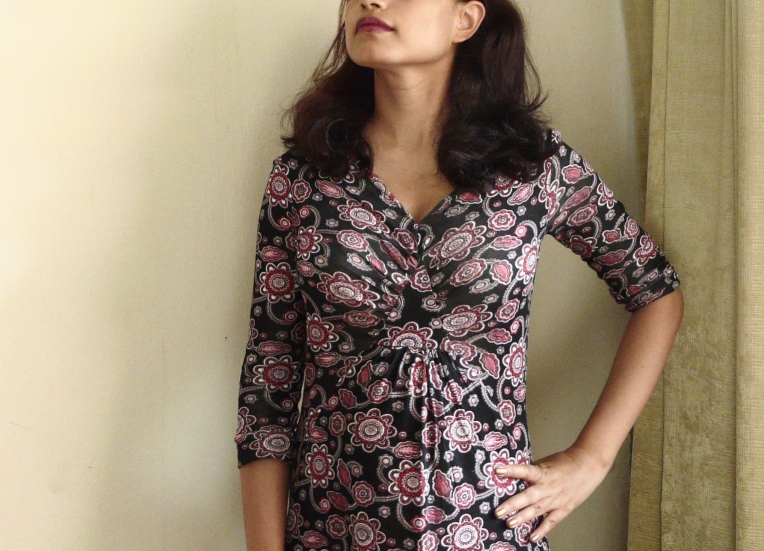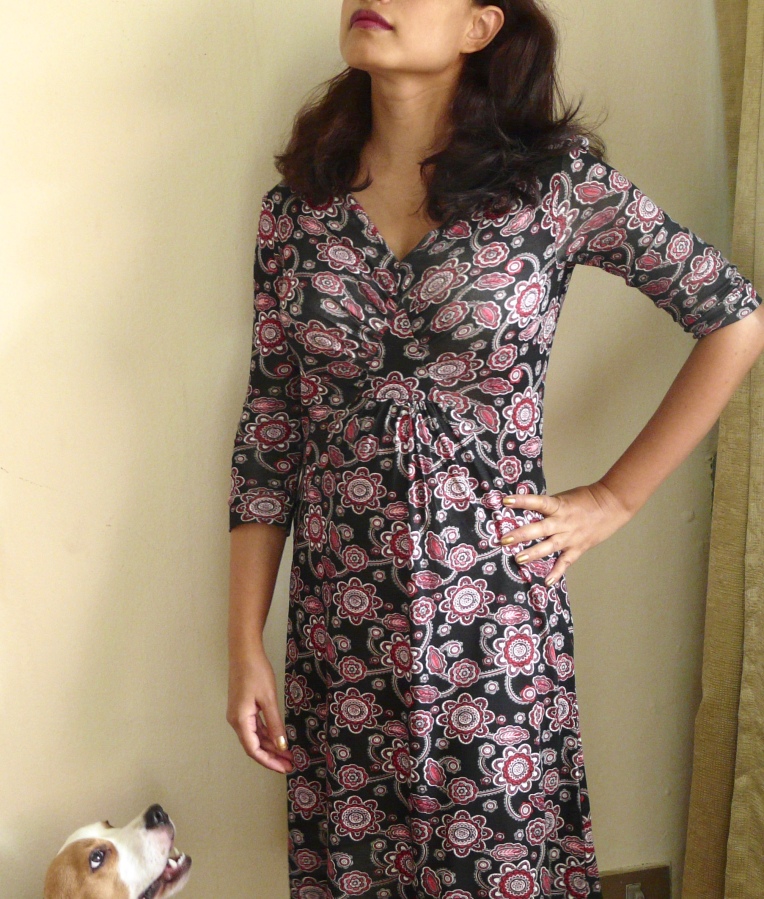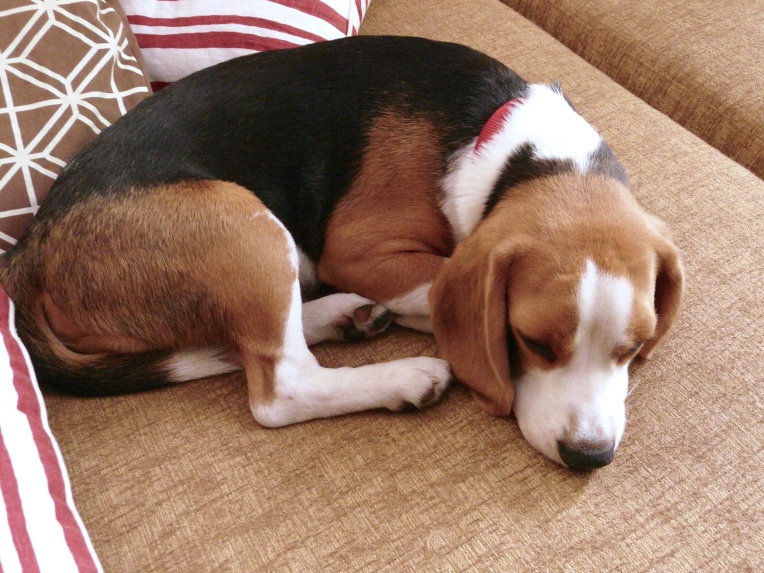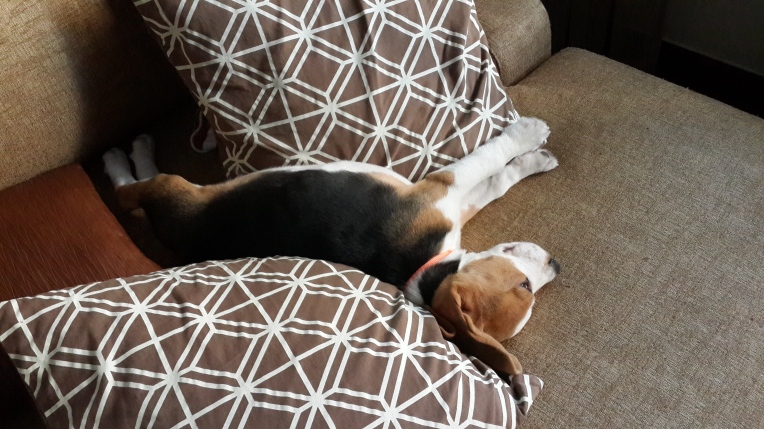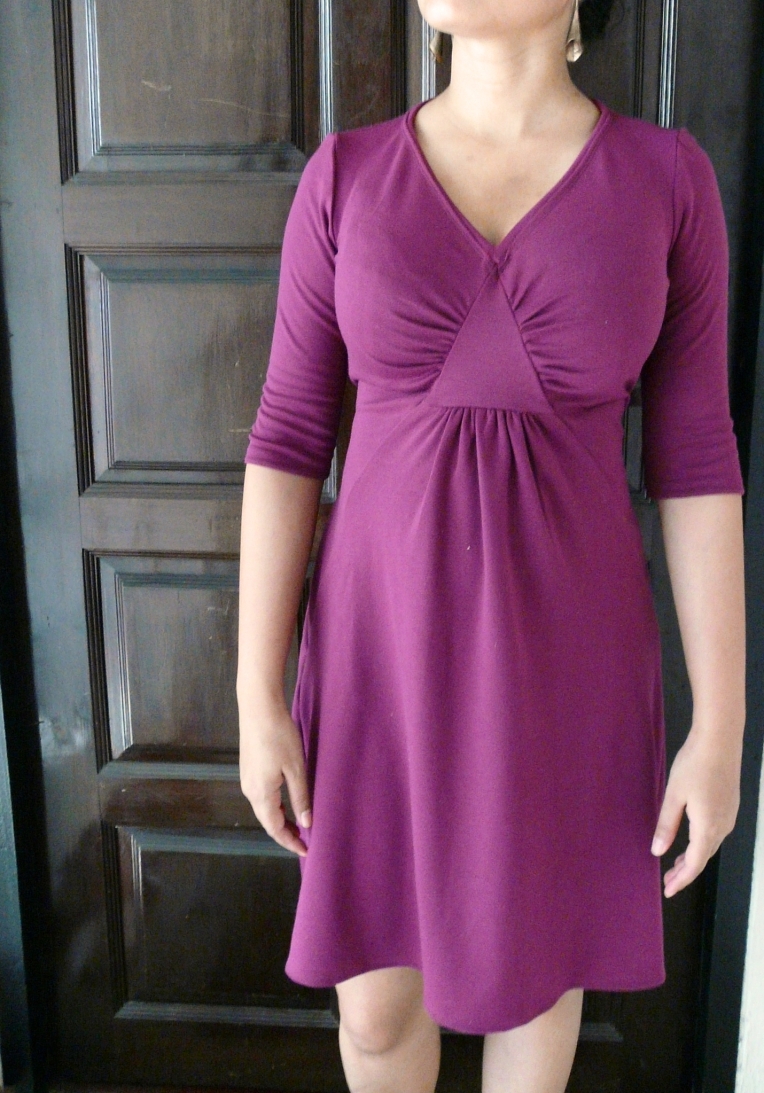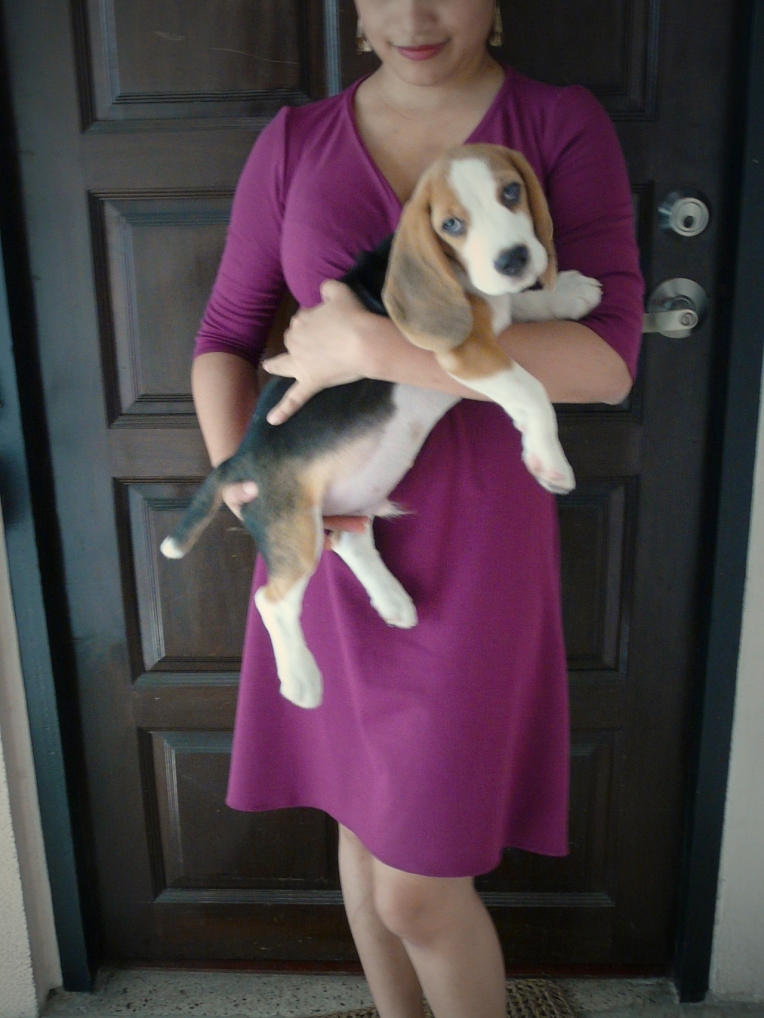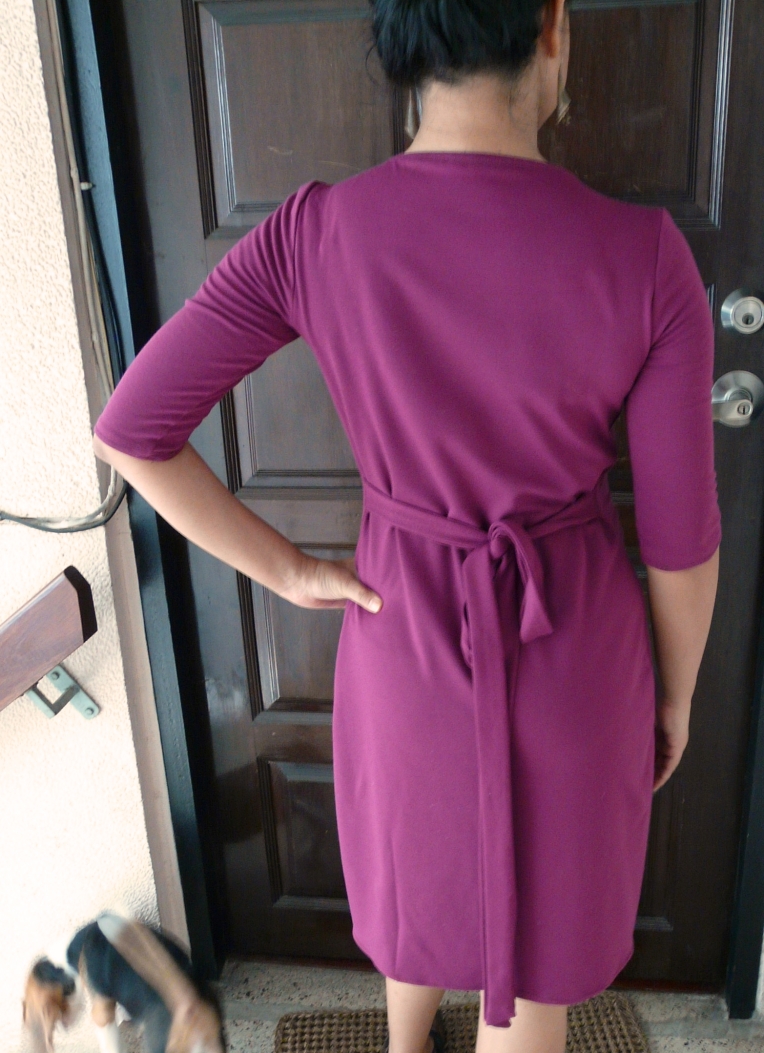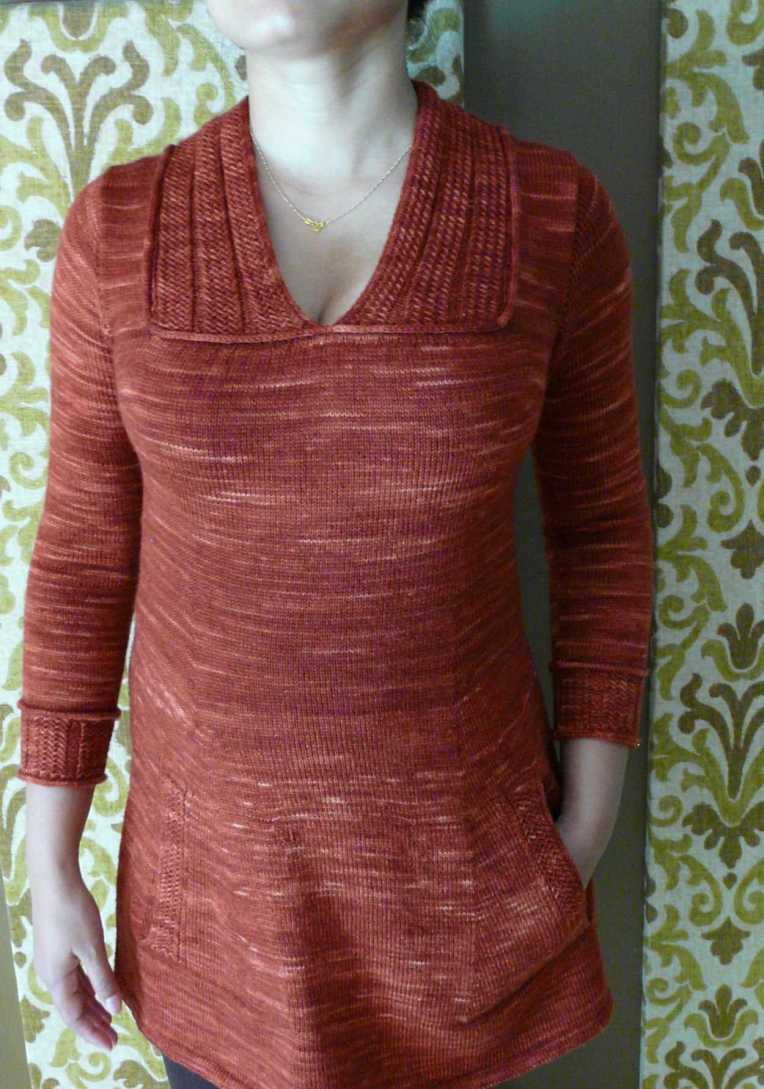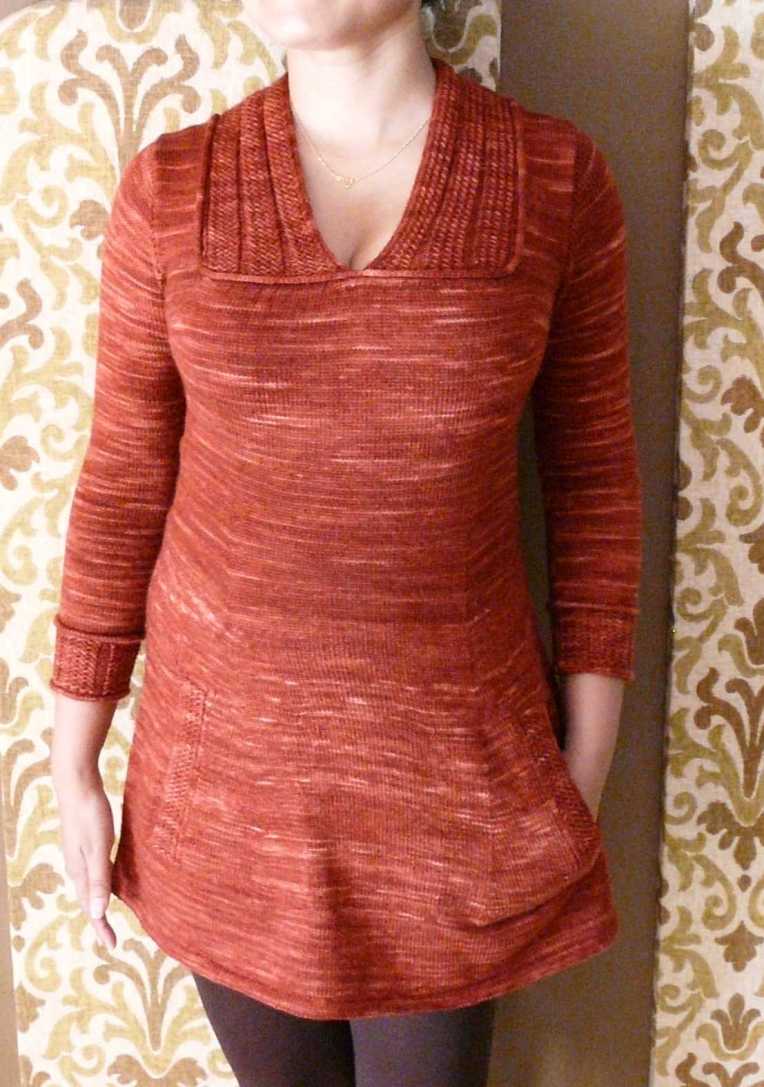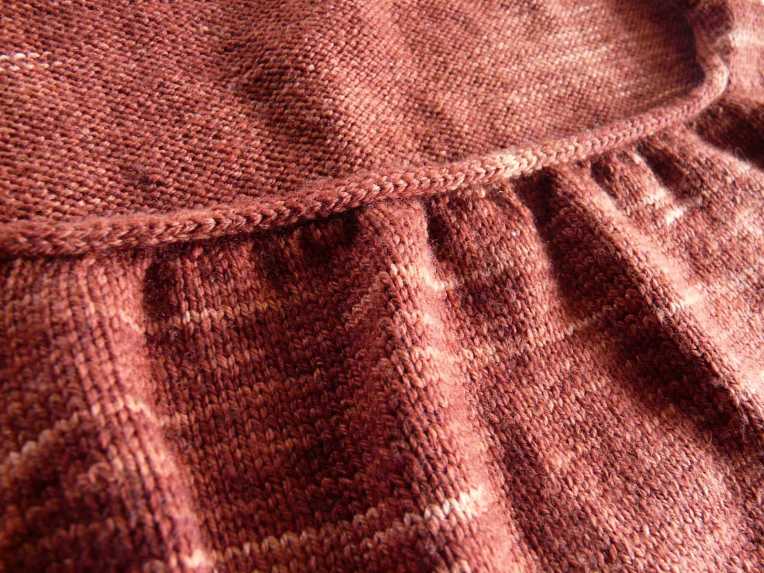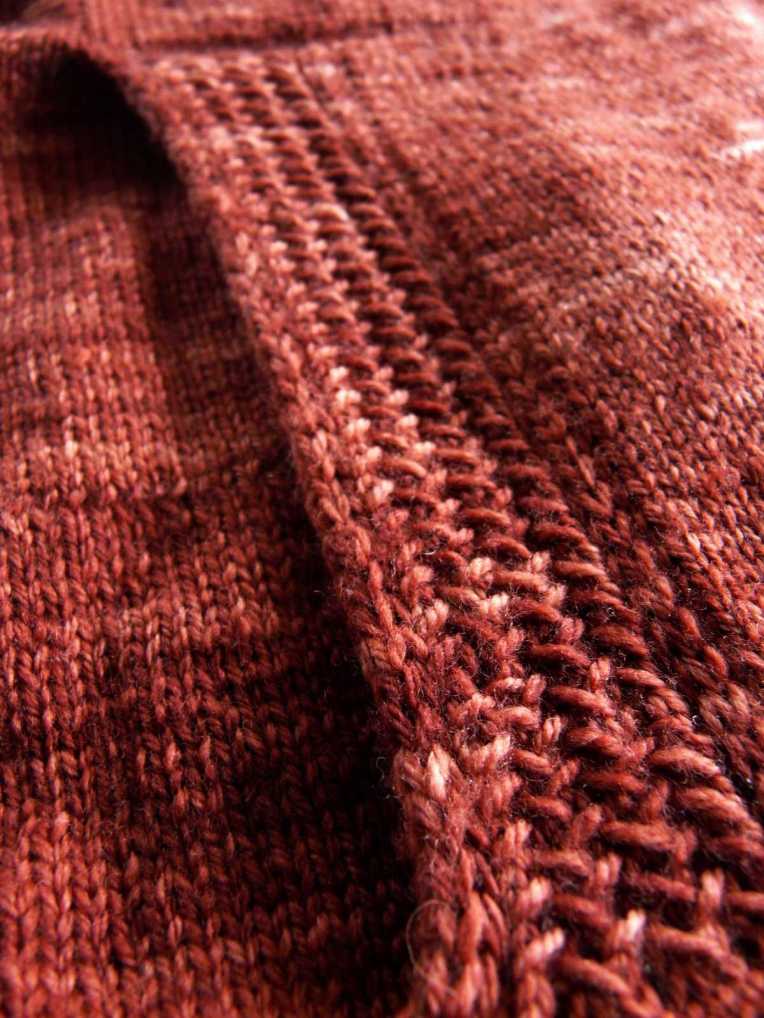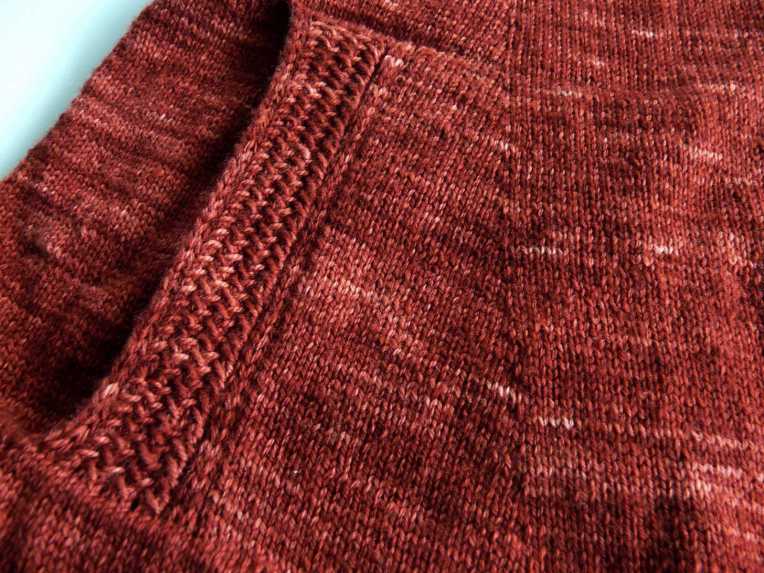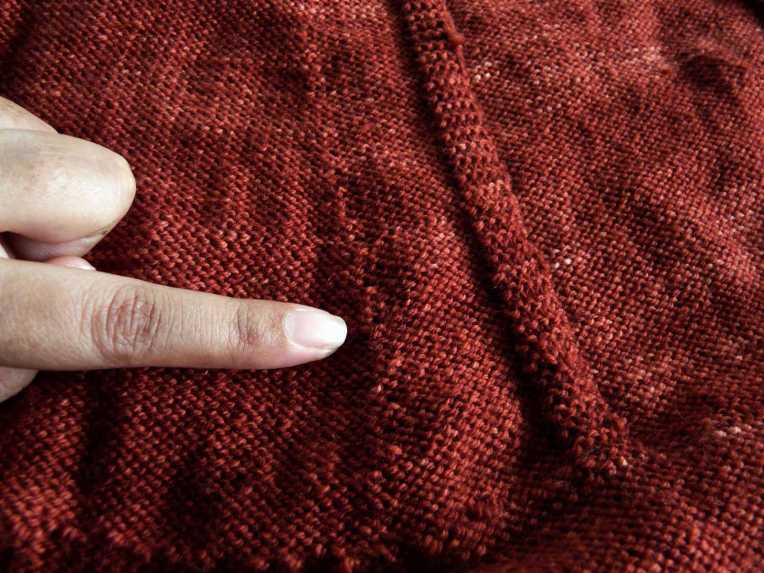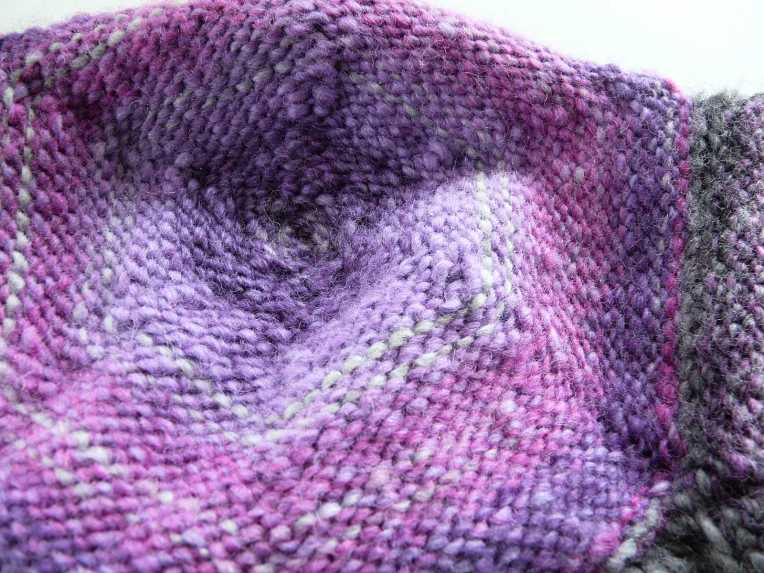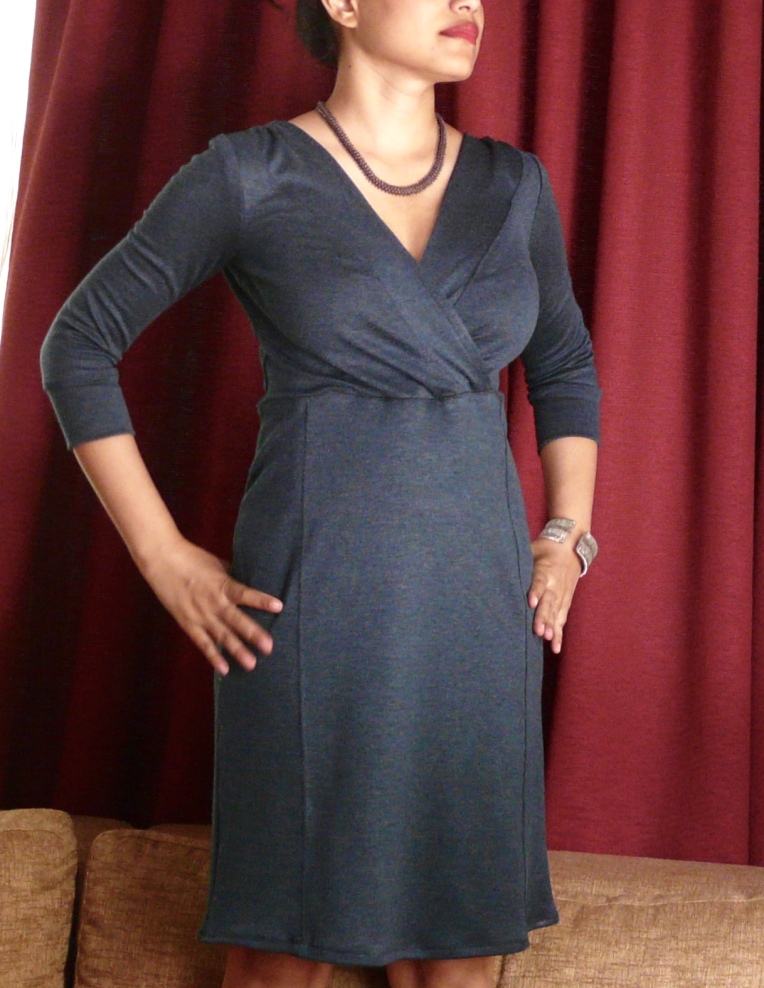
Colette Wren — DONE!
I haven’t made any Colette pattern since the Dahlia a couple of years ago, because the rather simple stuff they put out since then didn’t inspire me. But Wren, yeah!
Of course I decided upon the version with the panelled skirt. I did have to make some important changes to get the kind of fit I like. That said, there are some issues with the drafting of this pattern, so take note!
Size
Looking at the sizing guide, my bust size put me in XS. But the finished garment measurement on that would give me negative ease of 4 inches! Eep! I know a little bit of negative ease on knits is good, but 4 inches?? I became thoughtful.
Because of my thick waist, I decided to grade up to S in that area. But the finished measurement on that would still give me some negative ease. I became really, really, thoughtful.
Finally, my hips put me back in XS. But the finished garment would still give negative ease of 4 inches! Never! Negative ease in a clingy garment which extends below the hips means butt cupping and pelvic cling and all sorts of other maladies out of the fitting dictionary. I wasn’t going to let myself in for any of that.
Fortunately, I’d sewn my Muse Natalie a few weeks ago, and the ease on that was perfect. Mildly negative in the bust and mildly positive in the waist and hips. So I knew I was on the right track and felt very confident in choosing to go up to M at the hip notch. I did, however, go down to XS again by the hem, to get that shapely look the garment was trying to achieve.
I’m not sure why the pattern has so much negative ease throughout. Perhaps it’s a way of getting the garment to ‘fit’, but to me that seems like lazy drafting. Knits can be shaped, albeit not with darts, and should be, instead of just relying on the stretchiness of the fabric.
Pattern Changes
Back: XS at shoulders and underarm, graded to S at waist. So many reviewers complained that the armscyes were too loose that I simply drew in a smaller one from my Muse Natalie pattern.
Front: XS at shoulders and underarm, graded to S at waist. I also did an FBA of one inch, so that I gained 2 inches across the whole front and so kept the negative ease of the finished garment to 2 inches (original 4 minus 2 added via FBA). I didn’t remove the extra width added to the waist by the FBA, since I need ease for my tummy. Now, to do the FBA, I had to open a side dart. This I rotated close and moved the excess fabric to the front edge. In the picture below, the green area is the extra width added through my FBA, and the red wedge is the extra fabric in the neckline.
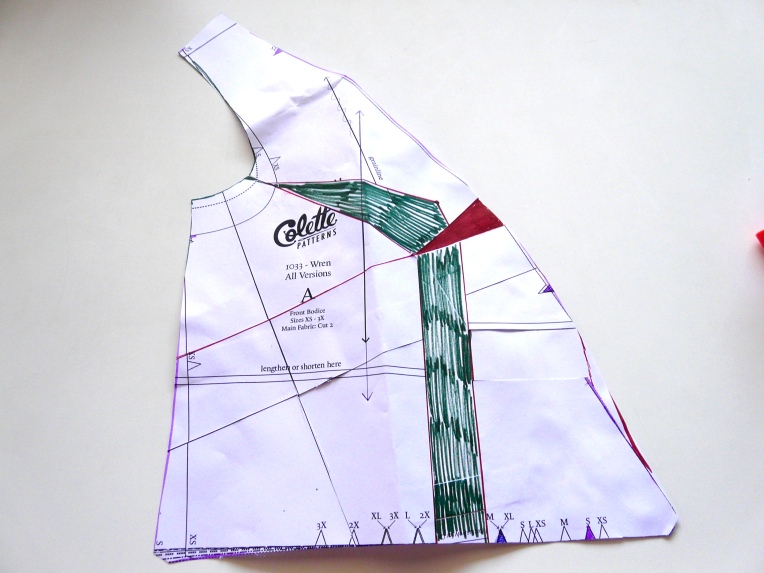
Instead of hemming the neck as suggested, I cut a long strip, reduced it by 10%, and used that as a continuous facing all around the neck once the shoulders were sewn.
Also changed the armscyes to Muse Natalie.
Sleeves: Used from the Natalie pattern, with an added cuff.
Back Skirt: S at waist, graded to M at hip and back to XS at hem.
Front Skirt: Ditto above. However, I also filled in the shaping at the top of the skirt panels to make them fit the extra width on the front added via the FBA. In the picture, these extra filled in bits are in red and maroon, and match the green FBA width above them.

Sewing
After all that, the sewing was fairly simple. I did all seams with a zig-zag stitch and didn’t need to finish any edge since the fabric was so stable. I also twin-needle top-stitched almost every seam, and love the crisp look!
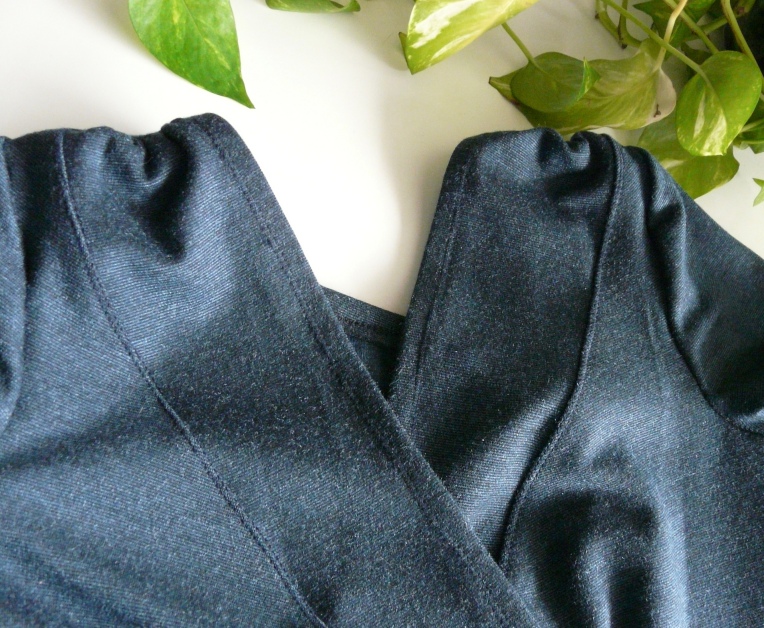
Fabric
Quite a thick, luxurious navy with thin metallic accents. One way stretch only.
Verdict
I really like this garment, especially with my changes. I can’t imagine how clingy it would have been without grading up through the body! However, there are a few things I would definitely change the next time
- Remove a one-inch-tapered-to nothing wedge from the CB
- Bring in shoulders for a narrower neck on the back
- Ditto on the front, continuing the extra fabric all the way to the waist for more coverage.
- Full bicep adjustment on the Muse Natalie sleeve
If you intend buying this pattern, do be aware that most reviewers have noted problems. The sleeves are very wide and low and practically everybody has had to modify or substitute. The waist is pretty high; I like that, but it’s something to note if you want the dress to hit at your natural waist. The neck finishing is a bit amateurish, and many others have added a facing instead of simply turning it down. And the (in my opinion) excessive negative ease throughout the body is a bit disconcerting.
Finally, there are two great eyesores about this dress. First, the wonky hem — this is my inexperience with sewing knits. I’m hoping washing and pressing will sort that out. Second, the hideous, undulating waistline. This is very, very obvious since it’s on the front, and seems to be a problem in every Wren I’ve seen, caused by the neckbands being kept short to prevent gaping. You can see how the waist rises along the sections where the neckbands are attached.
This means that the Wren pretty much always has to be worn with a belt. I’m thinking of drafting a self belt and incorporating that into the side seam the next time I make it.
Now I don’t mind making adjustments for fit, and certainly don’t expect pattern companies to draft to my specific body shape. Some narrowing and widening to fit my unique body is certainly expected. But I do expect companies charging premium price to ensure that the basic draft is good.
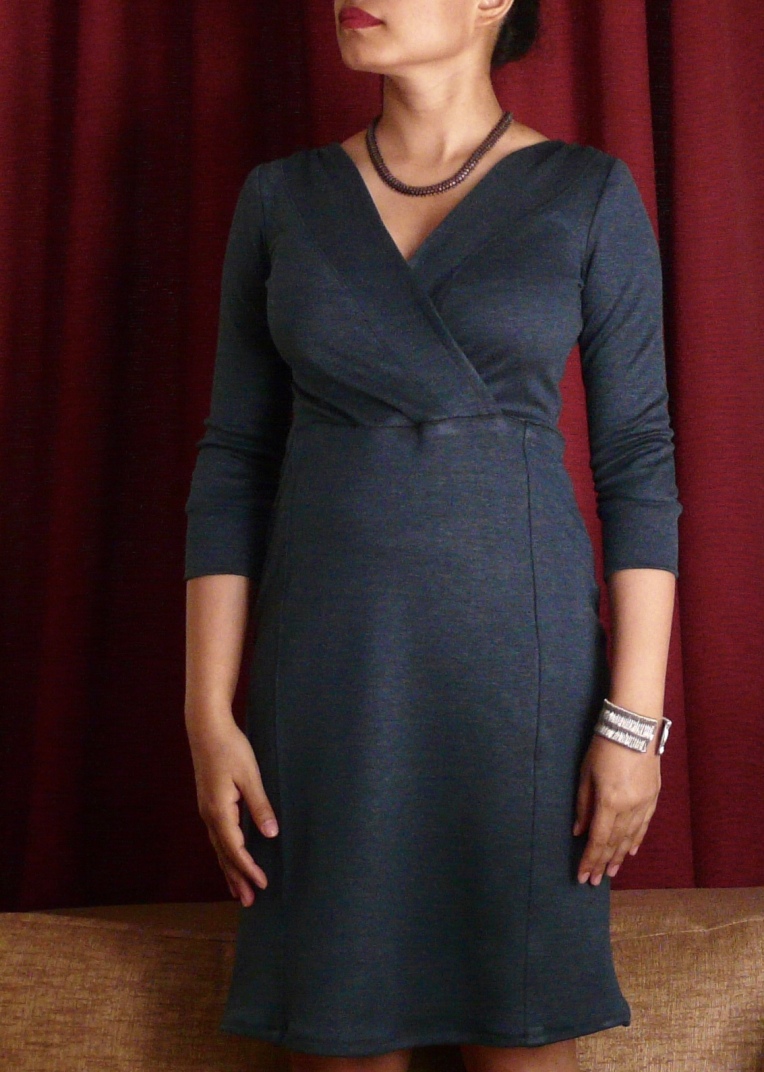
Score
7/10. Three points deducted for the undulating waistline, which should have been fixed as a design drafting error! And also for the gigantic original sleeves. But apart from that… I like the pattern and already planning other versions; perhaps one in a thin, copper coloured knit with flutter sleeves? How tantalizing!
